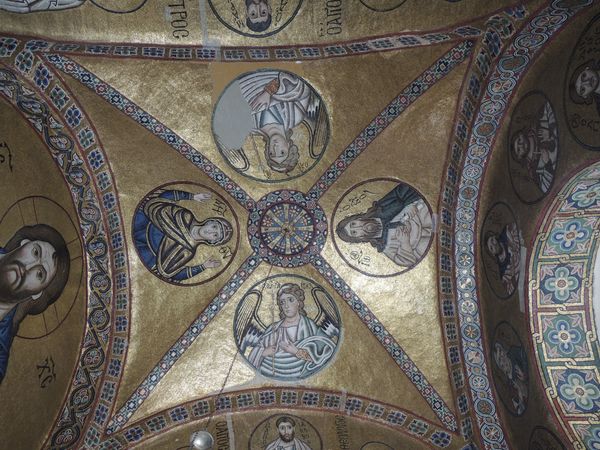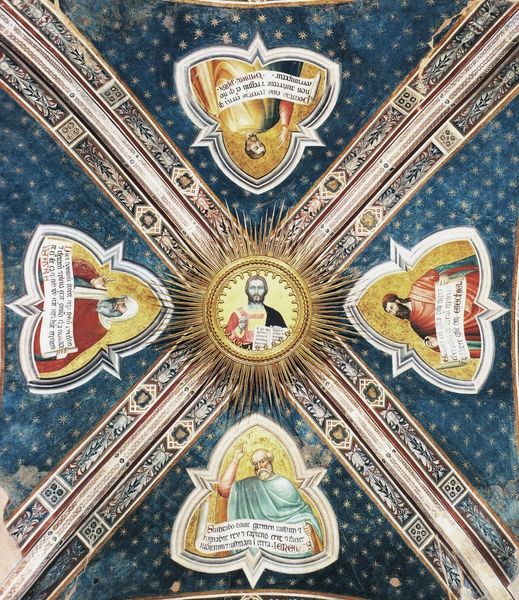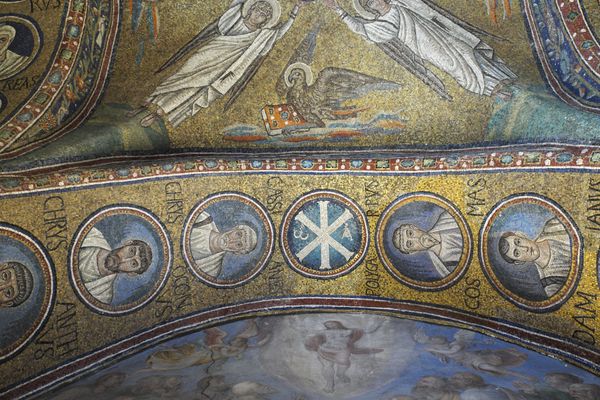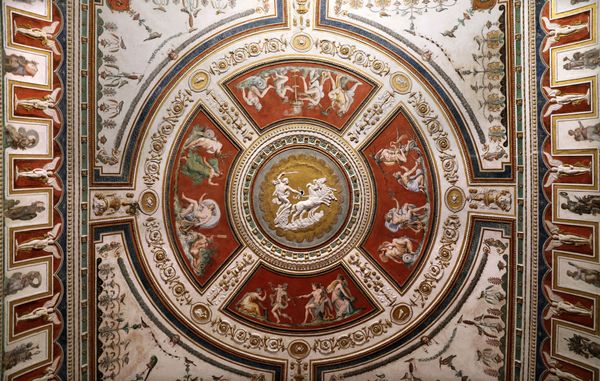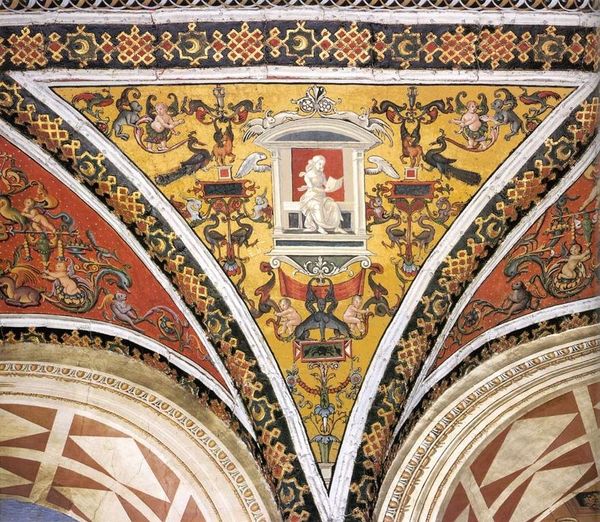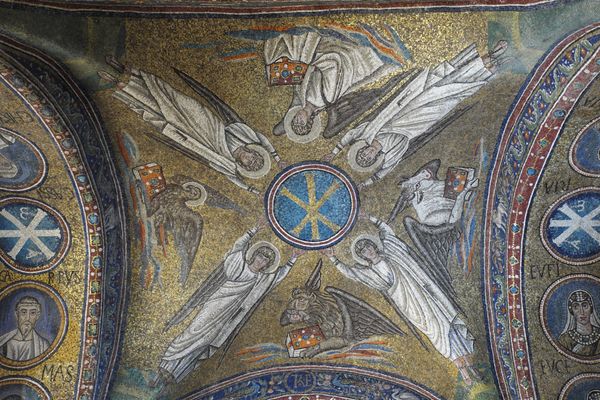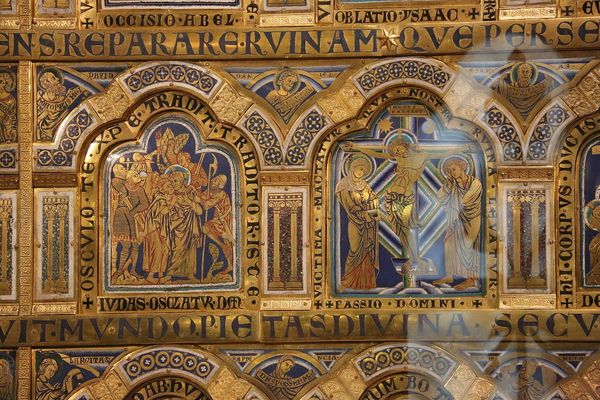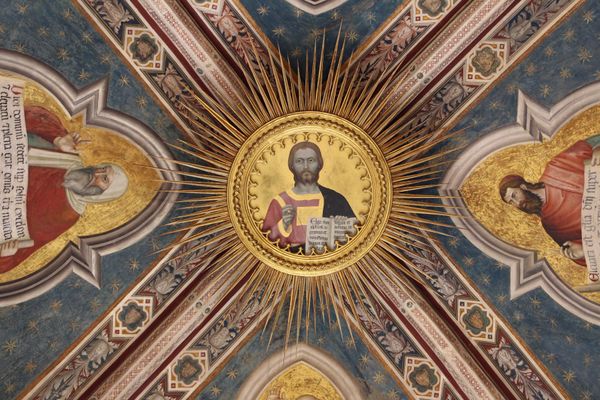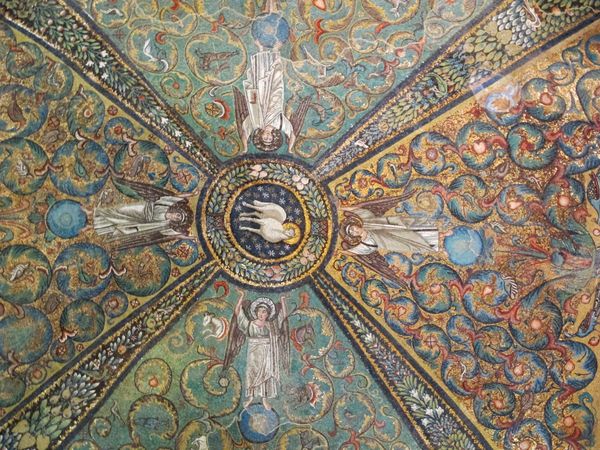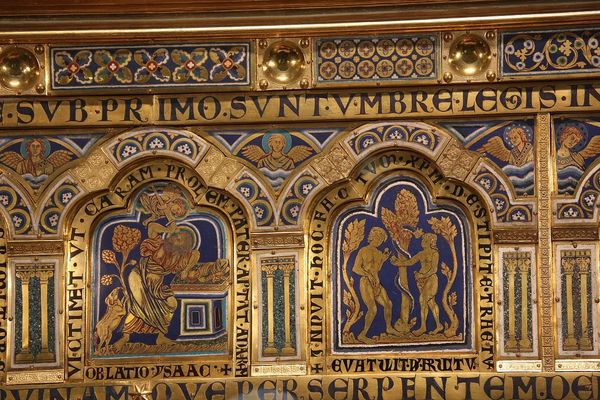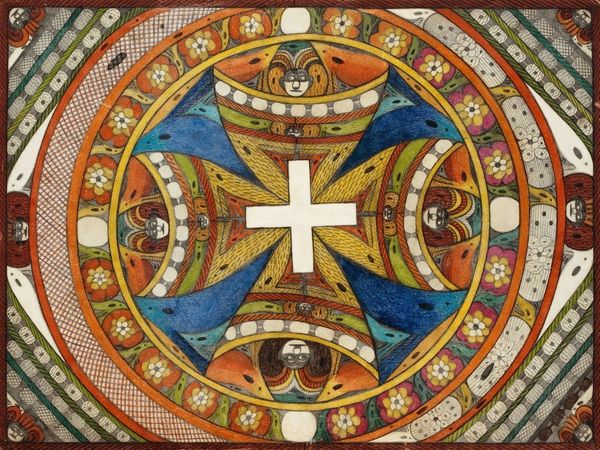
painting, fresco, architecture
#
medieval
#
narrative-art
#
painting
#
sculpture
#
fresco
#
geometric
#
italian-renaissance
#
architecture
Copyright: Public domain
Curator: The Rinuccini Chapel, dating to about 1370 and frescoed by Giovanni da Milano. What strikes you immediately about the materiality here? Editor: The surface feels alive. The intense blue, scattered with stars like hammered metal, it creates this impression of a vast night sky, meticulously crafted by hand. I imagine the repetitive labor involved. Curator: Indeed. The blue functions as a firmament. Consider the structural elements at play—the geometric rigor of the ribs against the expansive azure. The organizing principle of the cross dominates. The placement of figures seems almost incidental. Editor: Almost incidental? Those figures look very precisely placed to me. And notice the figures with text, illuminated with what looks like gold leafing. Do we know where that came from? This could tell us much about who this chapel was built for and what access they had. Curator: Perhaps. But I'm drawn to how these narrative details interact with the larger visual architecture of the space. Note the symmetry and the careful orchestration of color; consider how light must have filtered in. The artist manipulates space and symbol to guide devotion. Editor: Devotion takes work. The physicality of applying those gold stars, the intense planning required for frescoes… and it all had to align with available resources. How many assistants were involved, and what were their roles? This work required labor on so many levels. Curator: An interesting counterpoint, highlighting the confluence of intention and craft within the piece’s architectural framework. Editor: Ultimately, seeing how materials meet ideas is what brings these surfaces alive for me. Curator: For me, it's where those two dimensions transcend one another that true art emerges.
Comments
No comments
Be the first to comment and join the conversation on the ultimate creative platform.
